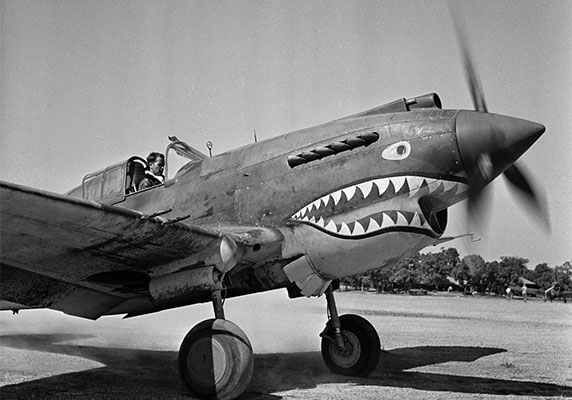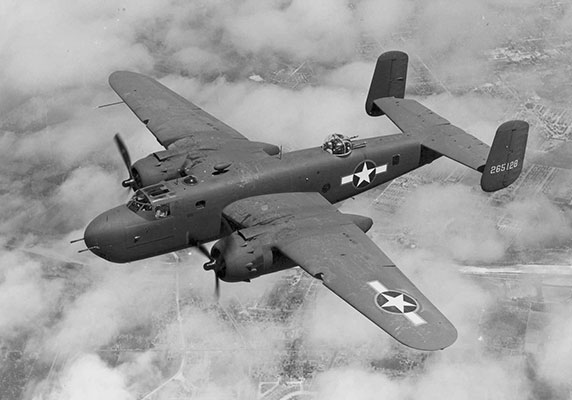The Lend-Lease policy was officially titled “An Act to Promote the Defense of the United States”, and was a program where the U.S. supplied Free France, Great Britain and the Republic of China with food, oil, and materiel between 1941 and August 1945. This program later included the USSR and other Allied nations. For the Soviets, the final Lend-Lease agreement was signed in Washing-ton, D.C., on June 11, 1942.1
To commemorate the 70th anniversary of the end of World War II, Wargaming has organized the “Warplanes to Siberia” project. Wargaming, along with the BRAVO 369 Flight Foundation (USA) and Rusavia (Russia), will retrace the historic Alaska to Siberia route, flying vintage World War II aircraft.
In particular, the ALSIB (or the Northern Trace) was the Soviet Union portion of the Alaska-Siberian air road receiving Lend-Lease aircraft from the Northwest Staging Route. Aircraft manufactured in the United States were flown over this route for World War II combat service on the Eastern Front. The ALSIB route was particularly treacherous, with strong, artic winds that blew over vast tracts of tundra.

It was not just pilots transporting aircraft across the route. The ALSIB and Northwest Staging Route also acted as a diplomatic route between Washington, D.C. and Moscow. Diplomats, high political figures and numerous government officials were ferried back and forth along the route during the war. It was also the American’s hope that the Alaska-Siberia route would allow them to use Siberia's air bases for bombing raids on Japan.2
However, at first, the Soviets were hesitant to use this route. As mentioned, the route was treacherous and viewed as impractical. Not to mention, the Siberian cities were not prepared to accommodate the heavy air traffic. There was also the fact that Americans had never been that far into the Soviet Far East. The route also had the potential to provoke Japanese military action against Russia. Nevertheless, with losses mounting on the sea run to Murmansk and the great distances involved in the Middle East, the Soviets agreed to open the Alaska-Siberia air route on Aug. 3, 1942.3

The air route connected Great Falls, Montana, Edmonton and Whitehorse, Canada, Fairbanks, Galena, and Nome, Alaska. A major field was built in Nome, which was the final point for the planes before they left for Siberia. In the thirty-one months of the program, nearly eight thousand aircraft were sent through Great Falls for transfer to Russia.4
Major General Vasily Molokov, famous north-polar aviator and Hero of the Soviet Union led a team of Soviet pilots tasked with making the dangerous trip. The crew’s mission was to cross hazardous mountain ridges and establish an air route and airfields in areas where no human had ever set foot. All of this they accomplished in just ten months.

The first to explore it were twelve Douglas A-20 Havoc bombers. The fleet was led by Lieutenant Colonel P. Nedosekin, and they flew from Fairbanks, Alaska, to Nome, Alaska. On September 29, 1942 the group started from Nome to Markovo, Russia. P. Nedosekin and his comrades crossed Siberia while the Battle of Stalingrad raged. Relations between Soviets and Americans mostly flourished, some even became good acquaintances afterwards, which helped foster a lasting relationship of good will.5
The materiel transported in the Lend-Lease project was by no means limited to warplanes: warships, weaponry, and the previously mentioned “luxury” items were also sent, as well as supplies.

The United States and Soviet Union secretly ferried thousands of warplanes from Great Falls to Krasnoyarsk, including the Bell P-39 Airacobra, Bell P-63 Kingcobra, Curtiss C-46 Commando, Curtiss P-40 Warhawk, Douglas A-20 Boston/Havoc, Douglas C-47 Skytrain, North American AT-6 Texas, North American B-25 Mitchell. At the height of the program there were anywhere from 150 to 600 Soviet pilots and other personnel at Ladd Field alone.6
The total distance of the ALSIB route from the city of Fairbanks to the city of Krasnoyarsk, Russia, was 6,400 kilometers (3,980 miles). Taking into account the American segment of the route was 4,800 kilometers (3,000 miles) up through Canada. Let’s not forget about the many thousands of kilometers to the frontline airfields, the entire distance was about 14,000 kilometers (8,700 miles).
The artic route, while the shortest and most direct route, was also the most dangerous. Around 3,964,000 tons of goods made their way to the USSR across this route. From September 1942 to September 1945, 133 planes were lost to weather conditions or pilot error—only 1.6 percent of the 7,923 planes that were delivered to the Russians.7
The route also marked the first time wheeled airplane flew from Great Falls, Montana, through Siberia to Krasnoyarsk, Russia, before the ALSIB Air Route was established. Previously, the air lane was only used by North Pole aviators who covered it with seaplanes in summer and by skiplanes in winter.

This meant that the craft had to be thoroughly inspected upon reaching their final destination in Krasnoyarsk. Check-up took up to 90 hours and was performed by a small crew of eight (four technicians, two aircraft engine mechanics, and two engineers), which meant a lot work in some of the harshest conditions on the globe.
To pay tribute to those who were involved in the ALSIB program, a new generation of pilots will take to the skies and recreate the legendary journey. Experienced aviators will take command of World War II aircraft, employing the three ship formation. These planes include the North American B-25 Mitchell, the АT-6 Texan and the Douglas C-47 Skytrain, also known as the DC-3 Dakota.
The flight begins on July, 17 and will take 18 days. One group will travel all the way from Great Falls to Krasnoyarsk with 11 stops in between. When this distance is covered, the squadron will head off to Moscow to take part in international air show MAKS-2015.
You can learn more about the Warplanes to Siberia project by checking out the website, where you can state up-to-date with news and reports by those tackling the route.
1,2,3,4,5,6,7 – (Dolitsky, 1995, p. 336)